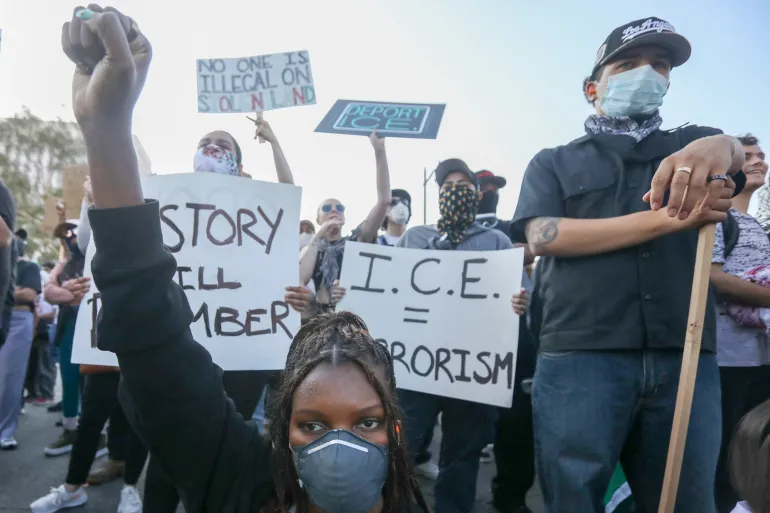A new travel ban announced by former US President Donald Trump has officially taken effect, causing a surge of protests in Los Angeles as many criticize the administration’s renewed hardline stance on immigration. The order bars citizens from 12 countries from entering the United States, mostly nations affected by conflict and displacement.
The ban, which Trump claimed was necessary to stop the entry of “terrorists,” became active on Monday. The announcement has fueled public anger, especially in Los Angeles, where thousands of protesters clashed with police and National Guard troops. Demonstrators took to the streets following a wave of arrests by immigration enforcement agencies.
What countries are affected by the travel ban?
The new restrictions target citizens from Afghanistan, Chad, Eritrea, Equatorial Guinea, Haiti, Iran, Libya, Myanmar, Republic of the Congo, Somalia, Sudan, and Yemen. Additional restrictions were placed on individuals from Burundi, Cuba, Laos, Sierra Leone, Togo, Turkmenistan, and Venezuela.
Trump said these countries were selected based on concerns over terrorism, poor visa security cooperation, and challenges in verifying travelers’ identities. He also pointed to issues like lack of criminal record tracking and high rates of visa overstays.
Despite the ban taking effect, there were no immediate signs of disruption at Los Angeles International Airport, according to reports from the Associated Press. Visas previously issued to individuals from these countries remain valid, although the actual enforcement of the rules at entry points is still unclear.
This move mirrors the controversial travel bans of Trump’s first term, which targeted mostly Muslim-majority countries and led to chaos and legal challenges at US airports.
Protests in Los Angeles escalated quickly over the weekend. Thousands of demonstrators flooded major streets, even blocking a freeway and setting fire to vehicles. The situation prompted Trump to deploy 2,000 National Guard troops to Los Angeles County, bypassing the authority of California Governor Gavin Newsom, who has since called for the withdrawal of federal troops.
By early Monday, law enforcement declared downtown Los Angeles an “unlawful assembly” zone and began clearing crowds using tear gas, rubber bullets, and flashbangs. The confrontation marked a sharp rise in tensions between state authorities and the federal government.
The White House justified the travel ban by referencing a recent attack in Colorado, where a man from Egypt—who had reportedly overstayed his visa—assaulted protesters at a pro-Palestinian demonstration. While Egypt is not on the list of banned countries, Trump said the incident proves the danger of allowing foreign nationals without thorough background checks into the country.
Volker Türk, the United Nations High Commissioner for Human Rights, has raised serious concerns about the legality of the ban, warning that its sweeping nature may violate international law.
Although Trump’s order has received support from parts of his political base, immigrant advocacy groups and international observers have condemned it as discriminatory and harmful to people fleeing war and hardship.
What does this mean for migrants and refugees?
The new policy could severely restrict migration opportunities for people from affected countries, many of whom are already displaced by violence or economic instability. The ongoing protests show a strong resistance from civil society and state officials, signaling a growing divide on how the US handles immigration.
As the situation unfolds, activists continue to demand the protection of migrant rights and urge the government to adopt more humane immigration policies. Whether the travel ban will stand legal and public scrutiny remains to be seen.

